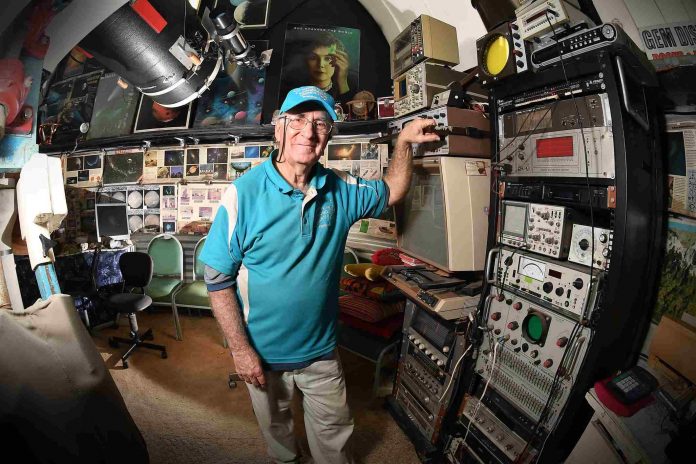NASA’s mission to put man and woman on the moon has suddenly thrust outer space back into the public spotlight, but some Sunshine Coast residents have been watching the night sky for decades.
Local star gazers are out in force from dusk until dawn, at observatories and backyard telescopes around the region.
Wappa Falls Observatory, Mapleton Observatory, Starflight Observatory and the Maleny Observatory are just some of the places that enthusiastic amateur astronomers meet.
Astronomy was ‘an escape’
For Owen Bennedick, astronomy was first an outlet and then a devotion that has lasted more than 60 years.
“It’s a hobby and a passion of mine,” the 70-year-old owner and operator of Wappa Falls Observatory said.
“It is also something that can inspire young people to get off the street. It shows them that there are other interesting things to do.”
Mr Bennedick was first captivated by the universe when he was about nine years old in Gladstone.
“My family life was pretty trash, so to escape problems in the family I would grab a little pair of Japanese binoculars that my dad brought back from the Second World War, and I’d go and look at the stars,” he said.
“I used to have to beg him to use those and then I convinced him to buy a pair of 7×50 binoculars, which was two weeks wages in those days.
“I was fortunate to be brought up in the space race era where it was NASA versus the Russians, and it was in all the newspapers.”
When his binoculars were run over by a car, he was introduced to a home-made telescope by relatives, and when his cousin showed him the Alloway Observatory at Bundaberg, which was the biggest telescope in the state, it set him on a lasting journey with the stars.
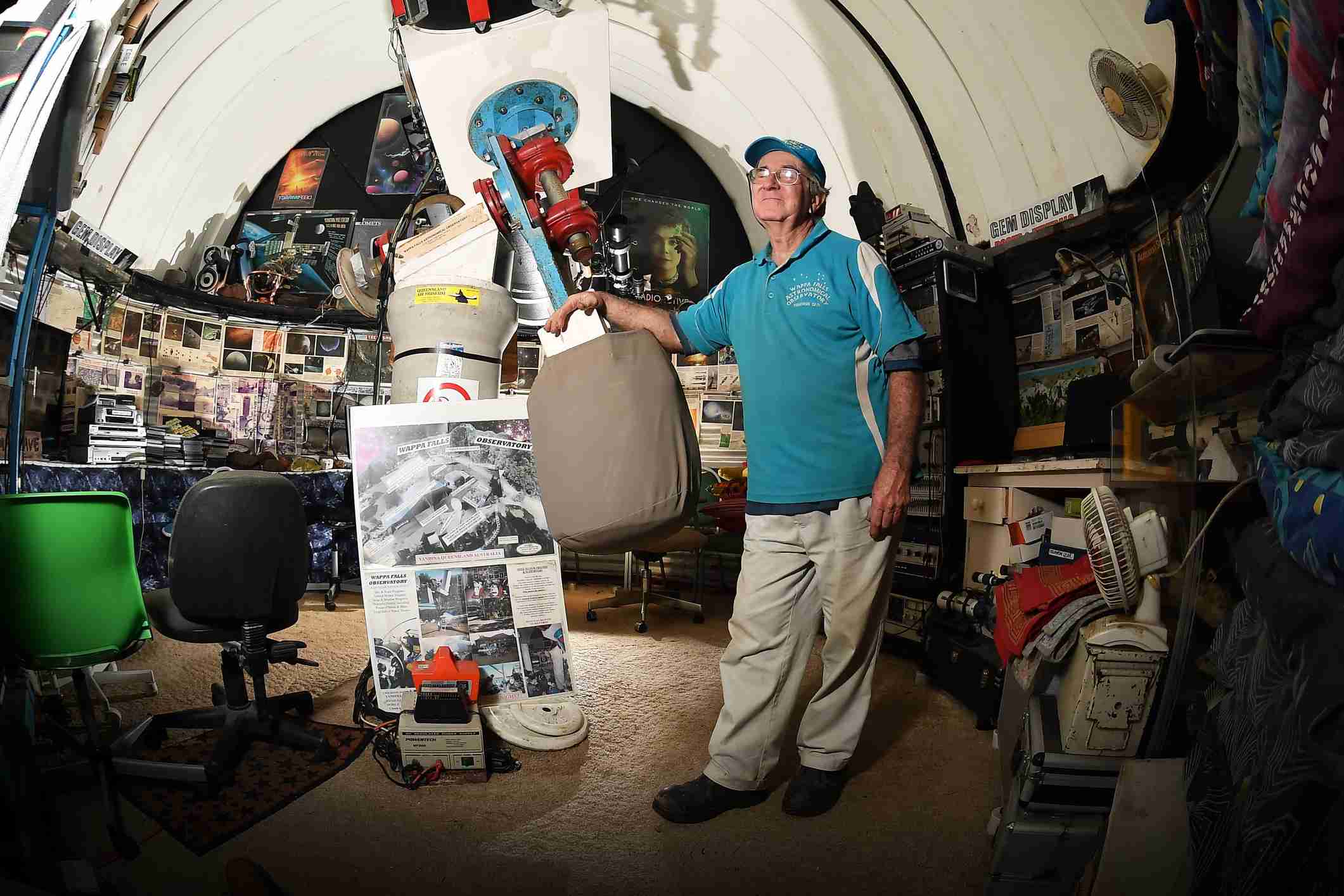
Although he forged a career in the entertainment industry – building stages, working lights and sounds and operating a recording studio – it was his zest for astronomy that shone brightest, and it led him to Yandina.
He bought a block of land near Wappa Falls and ultimately built an observatory and facilities.
“I wanted the darkest area I could find on the Sunshine Coast, that was also accessible,” he said.
“When everyone started to see it (the observatory) they all started asking questions and it’s blossomed since then.
“I’ve now got 37 telescopes, and six specialised telescopes for looking at the sun.”
Mr Bennedick runs displays at the venue and on the road, sharing his knowledge and resources with the community, including school students.
He also conducts bush walks and has an environmental display, to signal the importance of the planet we live on.
“When you have been doing astronomy for any length of time, you realise how precious Earth is,” he said.

“So, I’m trying to inspire people to look after our spaceship, which is Earth.
“We’re on our spaceship and if we don’t look after it, we’re not going to get another one.
“It’s nice to think about going to Mars and stuff like that but we need to keep an eye on our spaceship.
“We’re flogging the planet, so I’m teaching people to enjoy the wonders of the night sky but to look after the spaceship you are on.”
Mr Bennedick is also the builder, plumber, painter and repairer at the venue, while his son has also helped.
It was built and maintained with personal funds, family estate and contributions from observatory attendees.
“I don’t make any money out it if,” he said.
“This is my way to inspire people.
“When I was a little kid, I needed some inspiration … so this is a return thing for the community.”
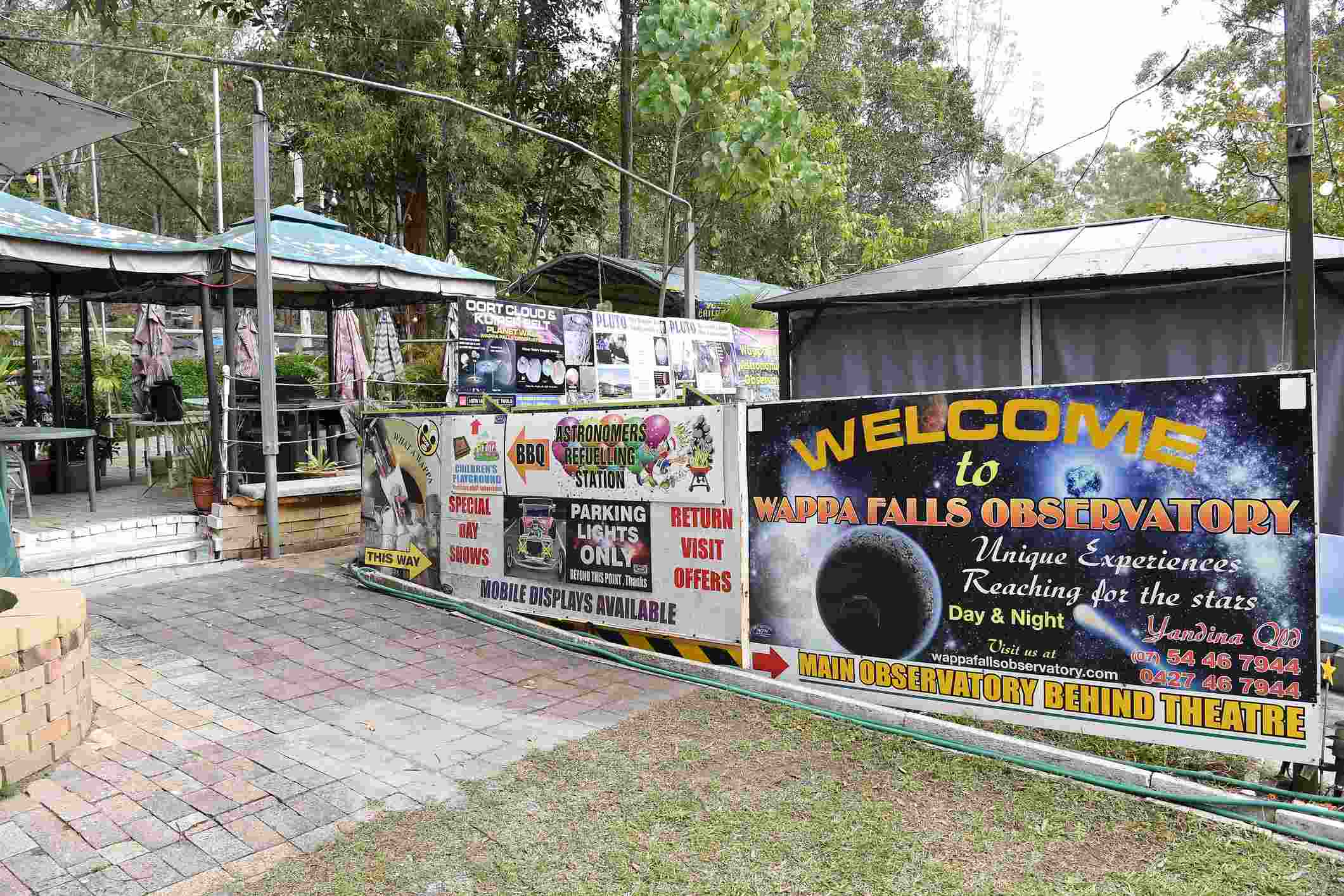
Mr Bennedick reflected on a childhood that included trying times, but it also provided him with lifelong skills and an eagerness for astronomy.
“There were lots of problems,” he said.
“Mum and dad tried hard but they weren’t brought up with a silver spoon in their mouths, so things weren’t always as we’d like.
“My dad went to the war in New Guinea and that didn’t help him.
“(But) he was brilliant with his hands and he taught me … so I’ve put that to good use by building entertainment stages and lighting rigs and building the observatory.”
Mr Bennedick can still be found upgrading the observatory, which he has run for 37 years.
“I don’t know whether my son will be interesting in taking it on,” he said.
“I hope someone will take it on, it’s too valuable an asset in Queensland. It’s one of the biggest private observatories in Australia.”
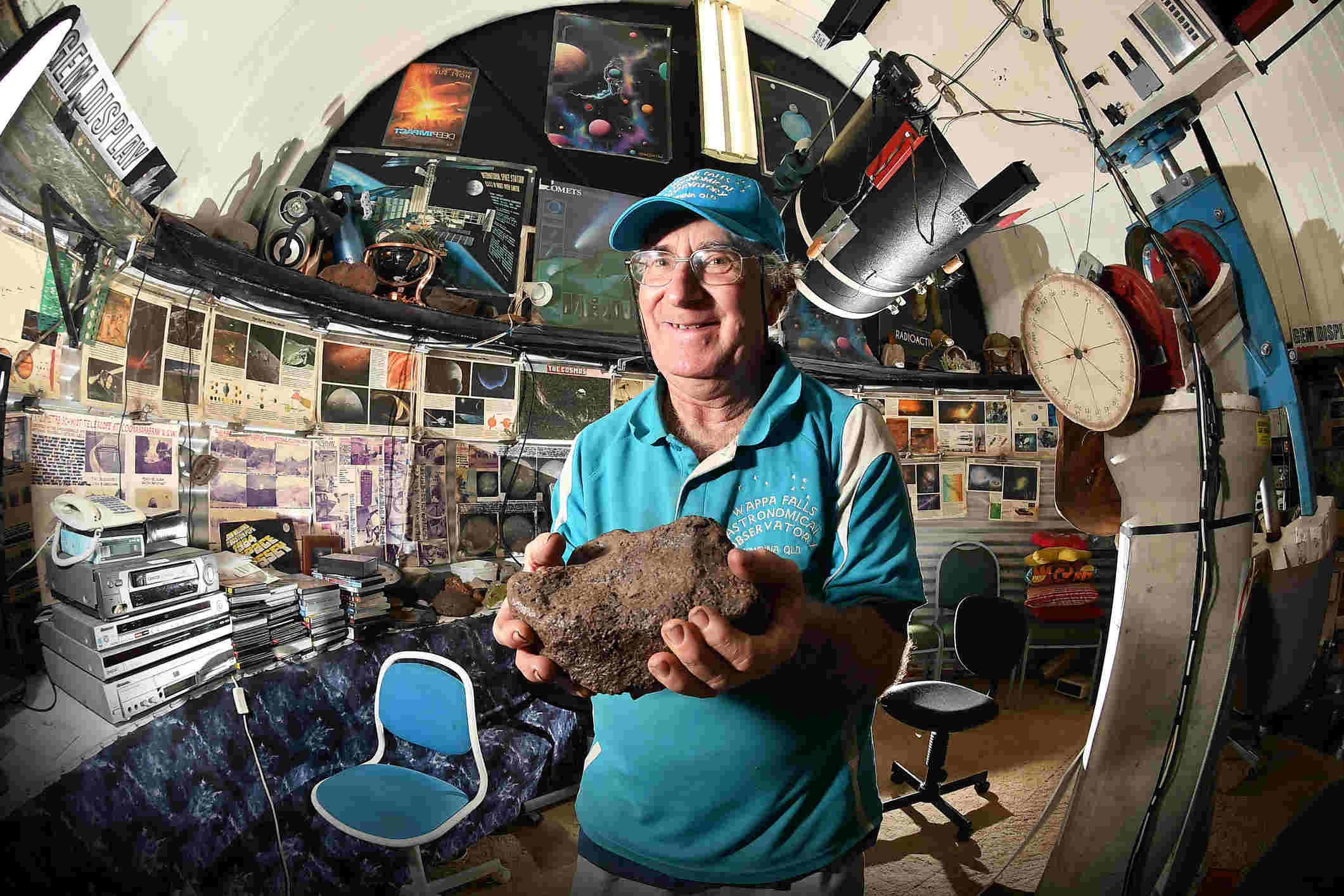
And he still has the same enthusiasm for the sky as he did when he was young.
“I just watched a space video this morning,” he said.
Mr Bennedick said Kenilworth was the best site for star gazing on the Sunshine Coast, while Dulong Lookout was easily accessible.
“You can get into astronomy very cheaply,” he said.
“That’s how I did. And you don’t need a PHD or a brain for maths. You can just enjoy the night sky.”
School project legacy
Adrian and Lainie Adams relish sharing their passion for astronomy with others.
They’re the main volunteer operators of the Mapleton Observatory, based at the Mapleton State School.
The observatory was founded in 2002, following the school centenary in 1999.
“Our children went to the school, my wife was the treasurer of the P&C and the principal (John Henley) was keen on astronomy,” Adrian said.
“We all wanted to do something special for the centenary and it was decided we would build the observatory.”
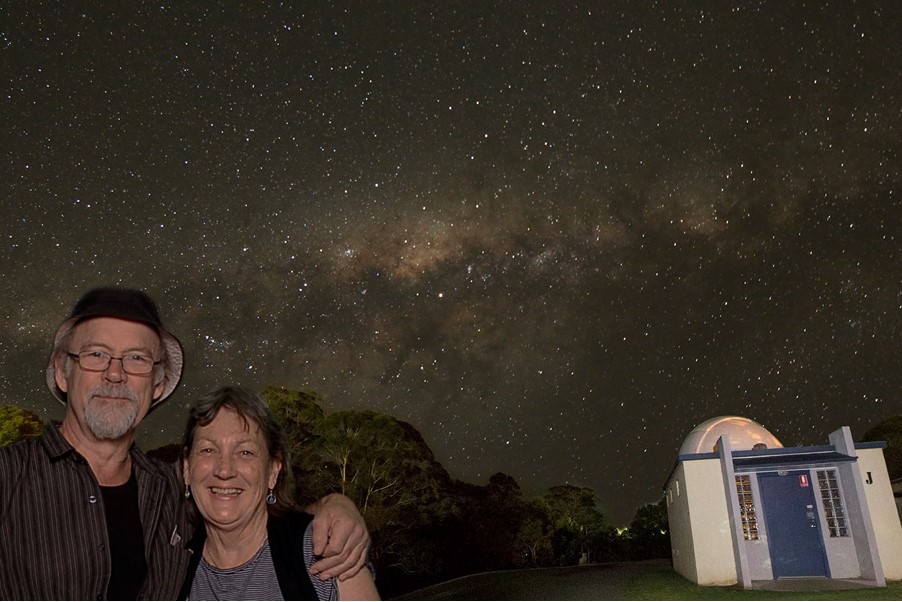
Gaming commission grants of $30,000 allowed them to buy an initial telescope and a dome, which was made by ex-boat builders in Redcliffe.
“We also raised money by selling raffle tickets,” Adrian said.
“It took years to fundraise.”
The husband-and-wife team have been running the observatory since it was built.
It’s 10m long and 5m wide and it houses a main telescope, controlled by an I-Pad. There are also several smaller, moveable telescopes.
The observatory is open to the public and it welcomes about 1000 students per year, with a Cosmic Kids project held once a term.
“We give them a bit of an insight into how the Moon phases work and how seasons work as the worlds spins around the Sun,” Adrian said.
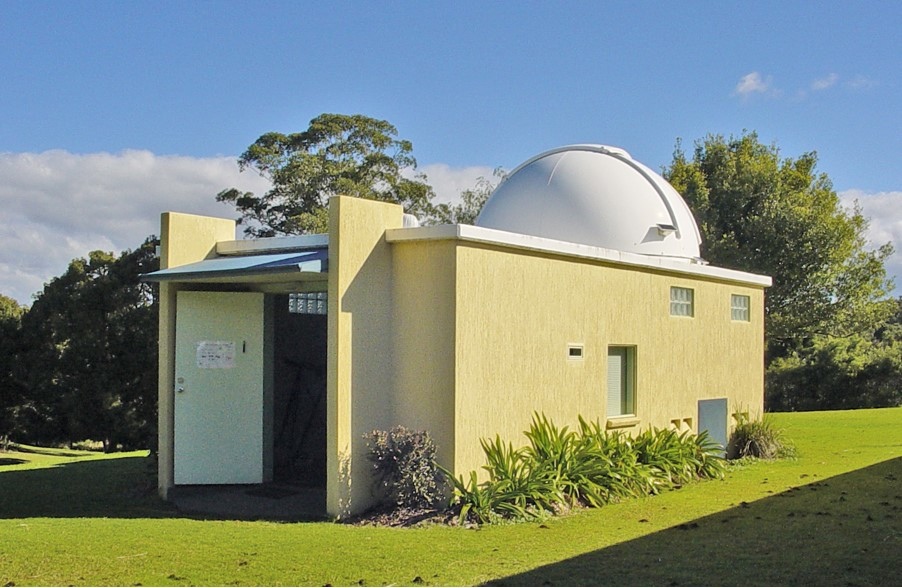
Adrian said astronomy was an amazing pastime that allowed people to better understand themselves and their place in the universe.
“Everything we know is a little strip around the world, about 10km thick into the mantle and up to about 45km, where you can’t breathe,” he said.
“We’re all in that area and no-where else.
“But if you took all the grains of sand from every beach of the world it would equate to about the same amount of suns in the universe, so there’s an awful lot more out there.”
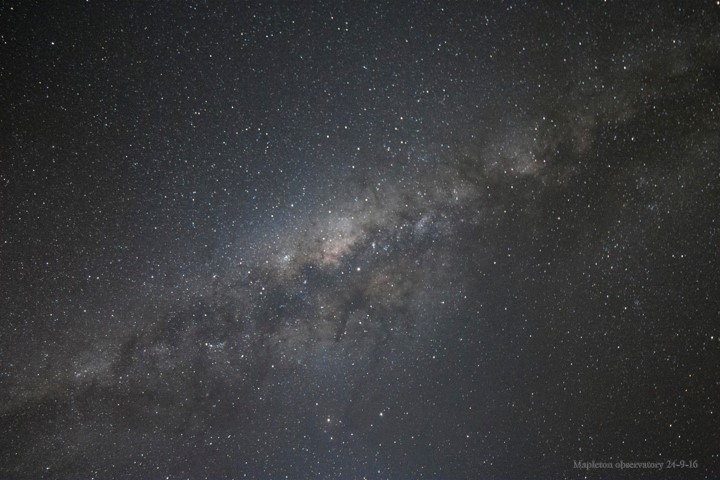
Adrian said visitors to the observatory were delighted by the experience.
“If you look carefully (with the naked eye), you will see a bunch of about 400 billion stars in the middle of the Milky Way,” he said.
“But if you look through a telescope you will also see gassy clouds, made up of different shapes and sizes. It might be in the shape of a horse’s head.
“And what you see through a telescope is only black and white, so I often put my camera on the telescope and open the shutter for a minute or so and you can see the beautiful colours in the Milky Way.”
The Adams said they were are unlikely to run the observatory, which is owned by Education Queensland, for much longer.
“We’re in our 70s, so we’re looking for someone else to take over,” Adrian said.
Star gazers gather
There’s something satisfying about looking at the stars with friends.
Members of the Sunshine Coast Chapter of the Brisbane Astronomical Society meet regularly to soak up the night sky at the Maleny Observatory.
The group formed in 2017, in conjunction with the Maleny Golf Club, which provides storage and lecture facilities.
Society secretary Dr Ken Wishaw said chapter members, from the Sunshine Coast and Brisbane, converged on the Blackall Range to escape the severe light pollution of Brisbane.
“We are a very collegiate and friendly group, who are curious about our place in the universe, the beauty of the night sky and the joy of being under the stars,” he said.
“It is a tranquil, yet awe inspiring, retreat from everyday life, which brings about a sense of wonder and awe.
“We also like sharing Tim Tams over coffee.”
They gather on Saturday nights, dependent on the weather and the moon phase, and they run monthly observing nights for the public from April until November.
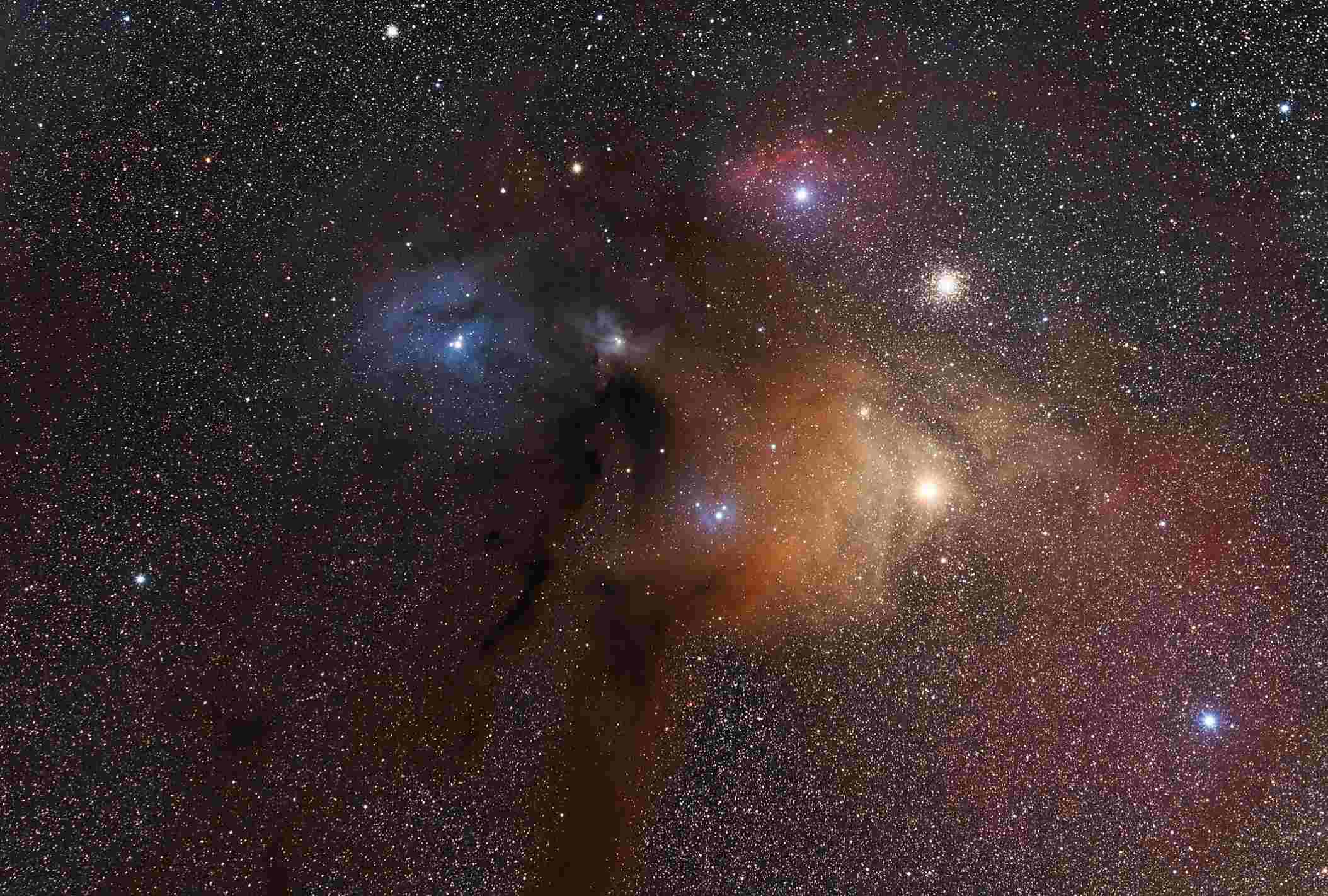
Up to 70 people can be seated in a marquee for lectures, adjacent to the observing field at the golf club.
The group boasts the “largest public accessible telescopes in South-East Queensland” and its contribution to night sky education has been acknowledged by the country’s peak professional body of astronomers, the Observatory by the Astronomical Society of Australia.
Dr Wishaw said members of the group were eager to share their interest in the stars with as many people as possible.
“Knowledge or equipment are not necessary to join in, just curiosity,” he said.
“Regardless of whether peoples’ interest is naked eye viewing, telescope observation or astrophotography, we endeavour to share our knowledge and equipment with all comers.”
Mr Wishaw said there were only a few good locations around the region, to see the stars in all of their glory.
“Maleny and the Obi Obi valley are the last places in coastal South-East Queensland that are not severely affected by light pollution,” he said.
“We are actively involved in keeping it that way, with enthusiastic local and regional support to minimise the negative impact of artificial light at night.”
Dr Wishaw, a retired medical specialist and adjunct professor at the University of the Sunshine Coast, is on the board of directors for the Australasian Dark Sky Alliance, which is an international educational organisation dedicated to night environment conservation.
Stunning images
Keen amateur astronomer John Henley has spent more than 60 years following the stars, after using his first pay packet to buy a small telescope in 1961.
It’s still in use, but he now boasts several telescopes and runs the Starfield Observatory, at Image Flat, near Nambour.
Mr Henley helped build and operate the East Warwick Observatory during the 1970s, before moving to the Sunshine Coast and helping to establish the Mapleton Observatory in 2002.
He relocated the East Warwick Observatory to the Sunshine Coast in 2005 and rebuilt it as the Starfield Observatory, with a second building, a 4.5m astrodome.
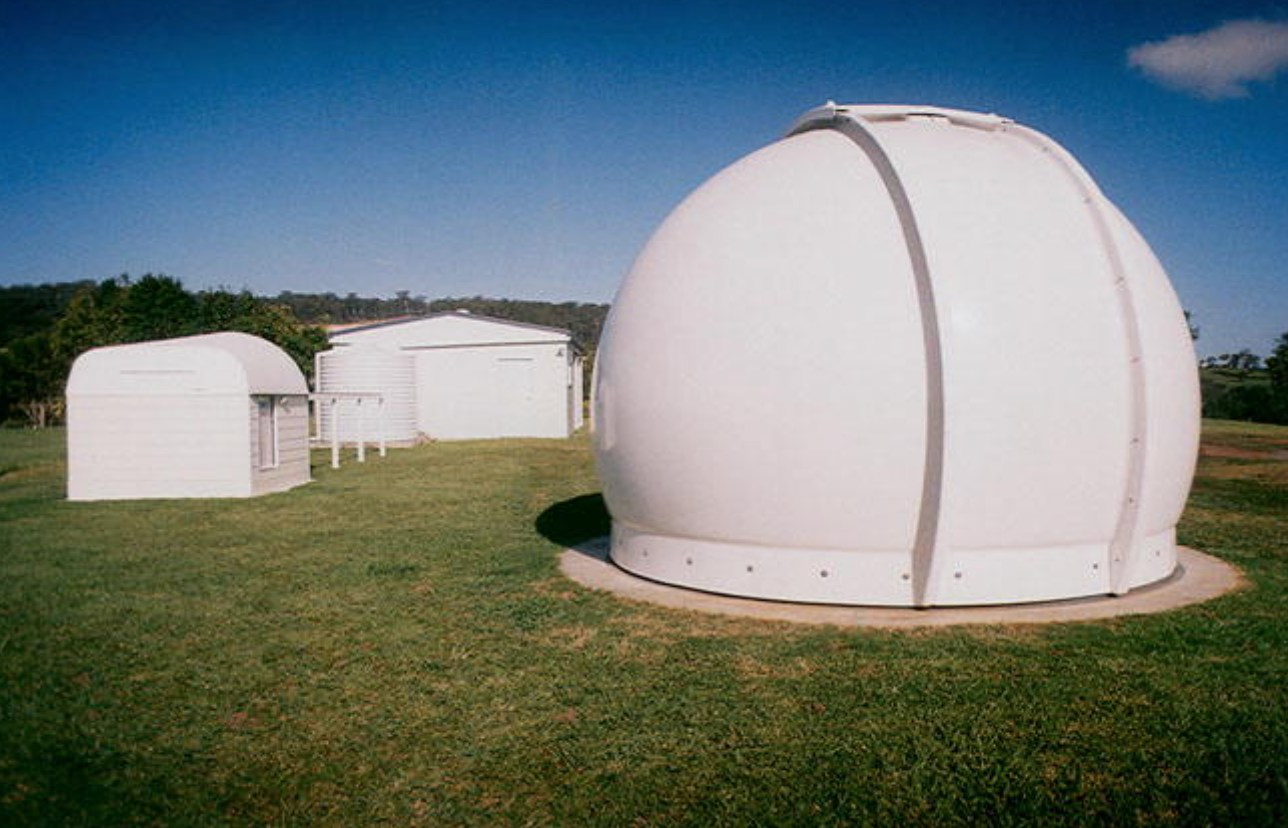
A lightning strike caused severe damage in 2014, which led to major changes and upgrades.
He boasts an array of equipment, including instruments that allow a high standard of astrophotography.
Mr Henley has been busy at work during the past couple of years.
“Until COVID restrictions end, I am concentrating on completing high-resolution photography of the Moon and planets,” he said.
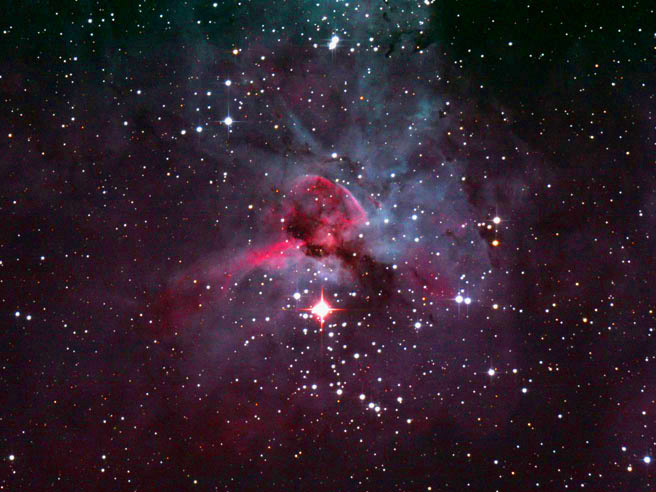
Mr Henley said the hinterland areas of the Sunshine Coast were best for observing.
“Nambour sky conditions are satisfactory for astronomy, although there is some light pollution from the town, the coast, and Brisbane,” he said.
“With photographs, the pollution can be removed through processing.
“For naked eye observing, the dark skies of Kenilworth are quite good.”
Members of the public were welcome to take part in regular astronomy courses at Starfield, including night viewing through the Ritchey-Chretien robotic telescope.
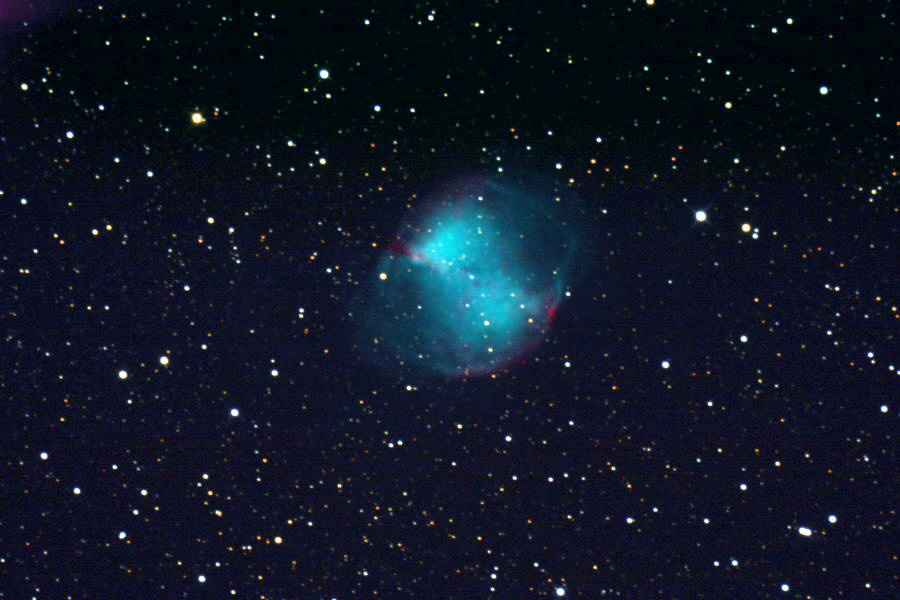
Designated Dark Sky Place
Investigations are ongoing for a potential Sunshine Coast Dark Sky Place, which would have environmental benefits and allow observers to fully appreciate the universe.
A spokesperson for Sunshine Coast Council confirmed the idea was still being examined, in line with their Environment and Liveability Strategy.
“Council is continuing investigations as to how best recognise, protect and celebrate our valued Sunshine Coast night sky, as more people choose to live in the region,” the spokesperson said.
“Dark skies have the potential to contribute to nature conservation, ecological integrity of protected areas and the sustainability of healthy lives in healthy cities.”
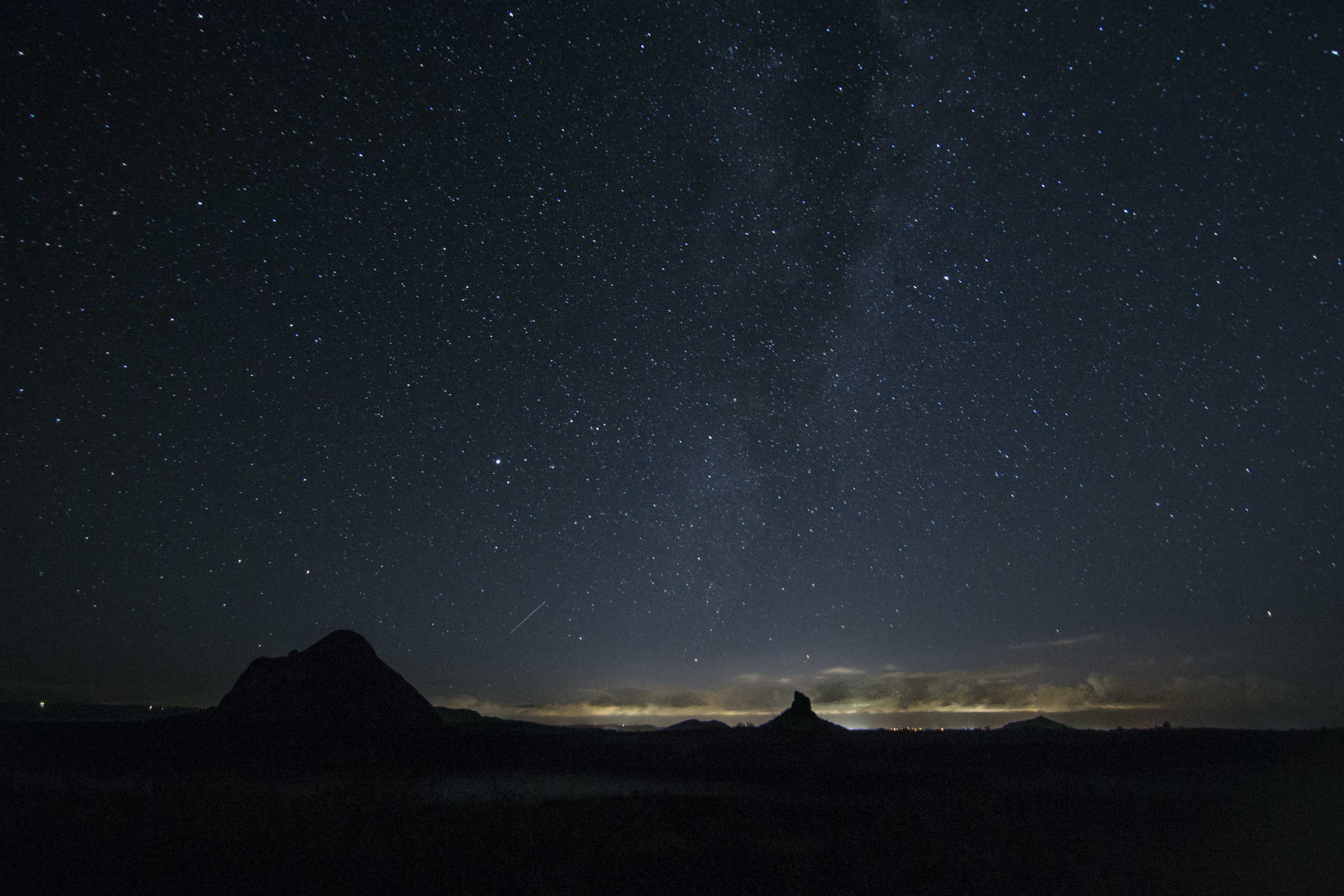
Investigations for a potential Sunshine Coast Dark Sky Place include scoping potential designations and possible location(s) within the local government area.
Officials were also determining the eligibility and requirements of pursuing these designations, including planning and resource implications and benefits and opportunities.
Council conducted an independent investigation in 2020, which summarised the benefits, constraints and considerations of different mechanisms that could recognise, protect and celebrate our night sky on the Sunshine Coast.
An International Dark Sky Place designation, through the International Dark Sky Association, was considered an appropriate way to recognise, protect and celebrate our night sky.
The International Dark Sky Places Program seeks to preserve and protect dark sites through responsible lighting policies and public education.
There are 195 certified International Dark Sky Places globally, with locations including communities, private lands, parks, and protected area.
“Recognising, protecting and celebrating our night sky aligns with implementing policies and programs to transition the Sunshine Coast to a more sustainable, resilient, and low carbon way of living,” the spokesperson said.
Help us deliver more news by registering for our free daily news feed. All it requires is your name and email. See SUBSCRIBE at the top of this article.


